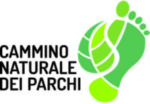Porta Capena
With the Circus Maximus behind us, the Palatine on our left and the Colosseum a few hundred of steps starts our Way. Here stood Porta Capena and from this gate, which was located in front of the curved side of the Circus Maximus, both the Via Appia and the Via Latina began, which then separated into the area of the present Piazzale Numa Pompilio. The Porta Capena belonged to the oldest walls of Rome, called "Serviane" because the tradition attributed the construction to the sixth king of Rome Servio Tullio, of the mid-sixth century. B.C. When the emperor Aureliano built the new city walls, the stretch of the Appian Way between Porta Capena and Porta S. Sebastiano became the urban stretch of the street, because in ancient times it was part of the city.
Sitest of interest
- The Circus Maximus
It is the largest building for the spectacle of antiquity and one of the greatest of all time (600 m long and 140 m wide), linked by legend to the very origins of the city: here in fact the rats of the Sabine marking one of the first important events in the city of Rome.
The Baths of Caracalla
Inaugurated in 216 under the reign of Marcus Aurelius Antonino Bassiano known as Caracalla, they were famous in ancient times as one of the seven wonders of Rome for the wealth of decorations and works of art that embellished them, and are still preserved today in some points for a height of over thirty meters.
- Porta San Sebastiano and the Museo delle Mura
At the Appian Way, in the Aurelian Walls a door was opened, the southernmost of the City, whose original name is Porta Appia; from the Middle Ages the name of Porta S. Sebastiano prevailed, as it led to the famous catacombs of that martyr. The monument can be visited and houses the Museo delle Mura.
- The Latin Cartiera
Among the few surviving industrial plants in the city of Rome, it is a unique structure of its kind and exceptional for its strategic position close to the Aurelian Walls; lapped all along its length by the river Almone, it ideally connects the Appia Antica to Via Cristoforo Colombo.
The Church of the Domine Quo Vadis
At the junction between Via Appia Antica and Via Ardeatina, on the left side, there is a small church known as Domine Quo Vadis? The name is linked to the legendary episode of the apparition of Jesus as a traveler to the apostle Peter, fleeing from Rome for Nero's persecutions. When asked Peter "Domine, quo vadis?" (Where are you going, sir?), The answer would have been: "I come to be crucified again"; at these words, the apostle would come back to face martyrdom.
The Sepulcher of Priscilla
At the junction between the Via Appia and the Via Ardeatina, stands the tomb that, it is hypothesized, Tito Flavio Abascanto, influential freedman of the emperor Domitian, had erected for his wife Priscilla, prematurely disappeared, whose funerals are described by the poet Stazio ( Silvae, V, 1).
The Catacombs of San Callisto and San Sebastiano
San Callisto is the largest underground cemetery complex in Rome, spread over four levels of depth, for an extension of 16 km. It takes its name from the banker Callisto, deacon and then pope, to whom Pope Zephyrinus entrusted the management of cemeteries owned by Christians, placing them under the direct control of the Church. The complex of S. Sebastiano is on the right side of the Via Appia Antica, just after the homonymous alley. The term "catacomb", which derives from the expression "ad catacumbas" (near the cavity), originally indicated the depression between the 2nd and 3rd mile of the ancient Appian Way, between the cemetery of Callisto and the tomb of Cecilia Metella, due to the ancient pozzolana quarries in the area; the catacomb of St. Sebastian was one of the few to remain accessible throughout the Middle Ages, so that the word for extension then passed to designate any underground cemetery.
The Casale of the former mill and the Sepulcher of Annia Regilla
The area now called Casale dell'ex Mulino was part of the "Pago Triopio" of Herodes Attico, an influential personage of the Antonimi age (mid-2nd century AD). The Pago Triopio was a vast agricultural estate transformed into a kind of sanctuary and dedicated to the memory of his late wife Annia Regilla. The cenotaph here is supposed to be dedicated to her. It is a sepulcher "a tempietto" on two floors, in the polychrome brick in vogue in the middle of the second century. d.C .: the funeral cell was located on the lower floor, while the funeral ceremonies in honor of the dead took place in the upper floor.
The Nymphae of Egeria
Arranged artificially in the side of the hill is the monument also known as "Grotta di Egeria": an impressive rectangular nymphaeum, with a large niche on the bottom and three smaller niches on the sides, where statues of river divinities were placed, from which mineral water flowed. from a spring located below Via Appia Pignatelli; today a semi-receding male statue is preserved in the back niche, from which water gushes, perhaps depicting the god Almone.
The monumental Appia
What goes from Cecilia Metella to Casal Rotondo is the most monumental stretch of the road, characterized on both sides by an uninterrupted succession of sepulchral buildings of various types, built with different building techniques, from the Republican era to the late Imperial age. And in this stretch to the fifth mile there is also the sumptuous villa of the Quintili of the imperial age. From the area of the Cecilia Metella Mausoleum up to the IXth mile Luigi Canina worked with his conservation and restoration interventions, inserting a frame of pines and cypresses that still today characterizes the landscape of the Appian Way. Subsequent restorations have recovered and restored large sections of the ancient pavement of the street and of the ancient crepidini (sidewalks), with the aim of returning to the Appian Way that arrangement of "outdoor museum" conceived by Canina.

